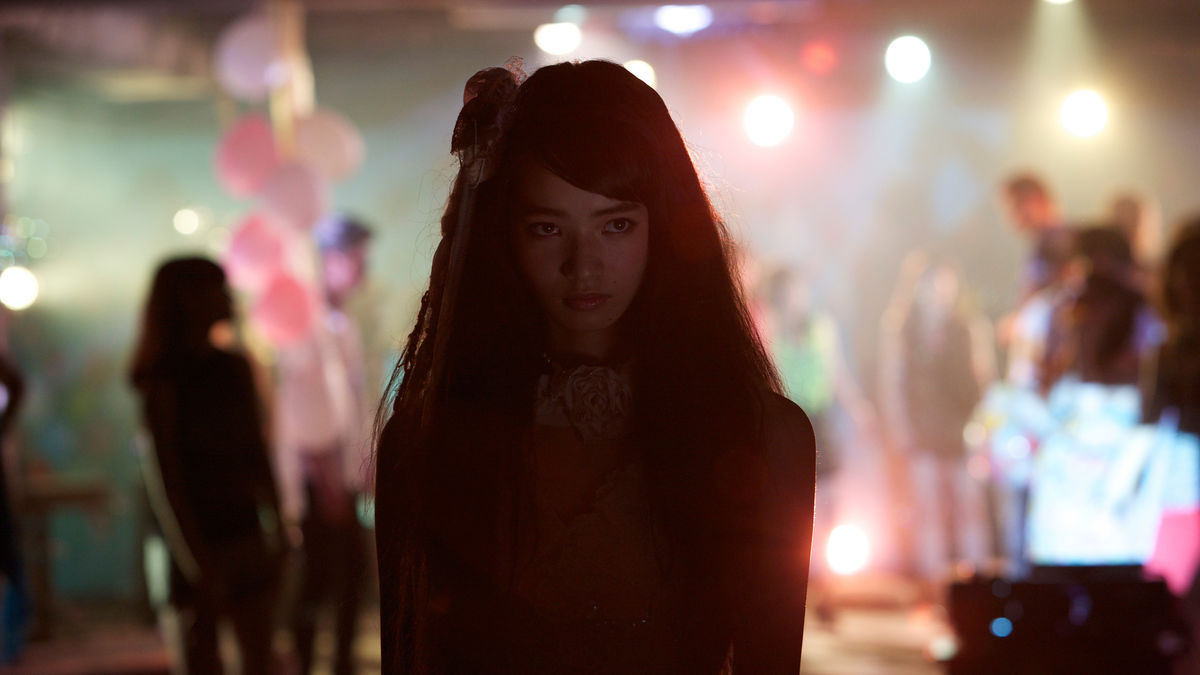By Chlotrudis Independent Film Society
Rating: 4 cats
Director: Tetsuya Nakashima
Starring: Ai Hashimoto | Asuka Kurosawa | Fumi Nikaido | Koji Yakusho | Nana Komatsu | Satoshi Tsumabuki

Original language title: Kawaki
Country: japan
Year: 2014
Running time: 118
IMDB: http://www.imdb.com/title/tt3108158/combined
Jason says: “The latest from Tetsuya Nakashima is not quite so sublime as his mid-aughts peak (KAMIKAZE GIRLS and MEMORIES OF MATSUKO is a heck of a one-two punch), and it kind of stretches out too long, padded by some increasingly ugly violence. On the plus side, though, it is energetic as all heck, propelling the audience through the underworld with a
protagonist that they’re not supposed to like, but who makes it hard to look away.
“High-school student Kanako Fukushima (Nana Komatsu) has, as of 16 August 2013, been missing for six days, making her mother Kiriko (Asuka Kurosawa) desperate enough to call her ex-husband Azikazu (Koji Yakusho), a drunken mess of an ex-cop that she had damn good reason for divorcing. Azikazu immediately shows what lost human being he could be, but he could be a dog with a bone where a case is concerned, finding through conversations with Kanako’s middle-school friend Nami (Fumi Nikaido), classmate Emi (Ai Hashimoto), and more, that Kanako may have become a bigger piece of scum than he is – his quest goes through a criminal underworld where Kanako is not necessarily a victim.
“Though Kanako is the character mentioned in the title, Azikazu is the guy that the audience will be spending the bulk of the movie with, and Koji Yakusho is pretty great as the title character’s terrible father. He is playing something of a monster, and not the restrained variety where a tiny bit less feeling than one might expect is the signal that something is off; Yakusho tears into his material to make Azikazu a practically feral beast. It’s the sort of performance that dares the audience to sympathize with him for being an honest, focused animal than the likes of his former partner Asai (Satoshi Tsumabuki in a delightfully oily turn) or how he’s able to let forth an animalistic rage as he tears into progressively more vile criminals. Still, even when Azikazu is doing our saying something that sounds like the right thing for the right reasons, there’s a certain sort of vacancy, like he’s distilled anger that just happens to be pointed in the right direction.
“Nana Komatsu, then, plays the daughter as a sort of inverse; where Kanako’s parents are raw emotion, she’s the sort of teenaged sociopath that most of the time can only dredge up disgust – her parents have made a mess of everything with their intense emotions, so this generation is all calculation and disaffection. It’s reflected in the frequently dismissive and hostile attitudes that the other teenagers Azikazu meets while searching for Kanako, a generational contrast that occasionally shows up in other ways, such as when the 1970s-inspired soundtrack that follows Azukazu around is pushed aside by the electronica of a rave he crashes.
“The soundtrack is not the only cue taken from 1970s cop films, especially ones from America – aside from the music, there’s a grainy look, a stylish set of titles, and an old clunker of a car (the kind you almost never see on Japanese streets). Nakashima is still making stylish movies in other ways, too: There are inserts which poke a little fun at the massive amounts of blood spilled, but he doesn’t linger on it too long, as Nakashima has always been one to jump quickly from one thing to another.
“He gives himself plenty to jump around with; the story (based on a novel by Akio Fukamachi) gives him a chance to jump back and forth in time, adding more pieces and connections as Azikazu learns more. The story goes into progressively darker areas, blowing well past awkward into truly unnerving territory, although at times as much for the film’s pitch-black sense of humor as anything else. Generally speaking, Nakashima does a great job of keeping the audience in even as this movie comes closer and closer to having a pitch-black heart that might easily push a lot of viewers away.
“It does still get to be a lot by the end, one of those movies where most viewers are going to think that the filmmaker has made his point about life being ugly or how much grotesque activity he can put on screen with plenty of time remaining before the credits roll. At least he’s doing it with energy and excitement; THE WORLD OF KANAKO may be a black, bleak tale but it’s almost always a thrilling one. 4 cats
“Seen 20 September 2014 in Alamo Drafthouse South Lamar #7 (Fantastic Fest, DCP)”
